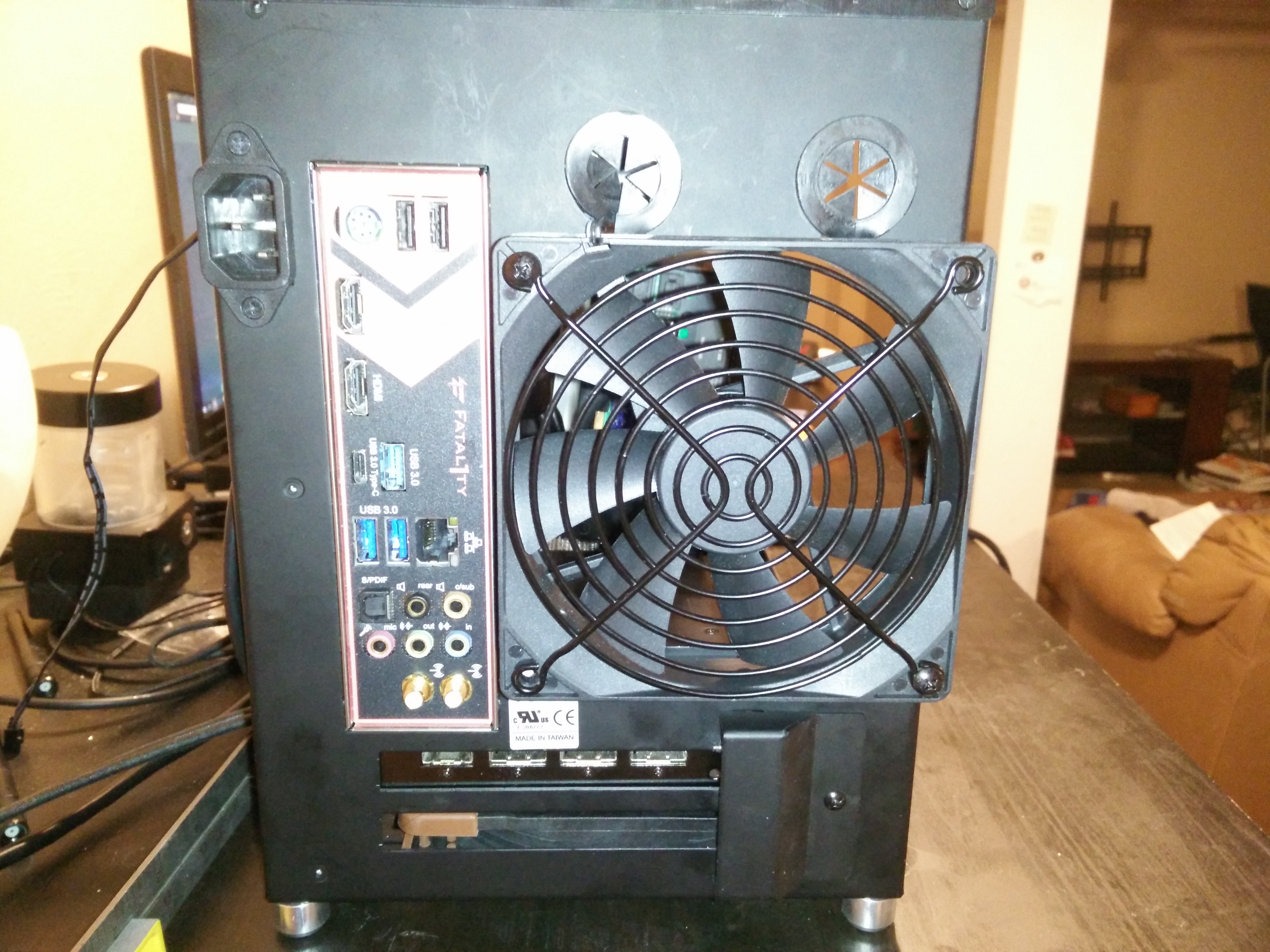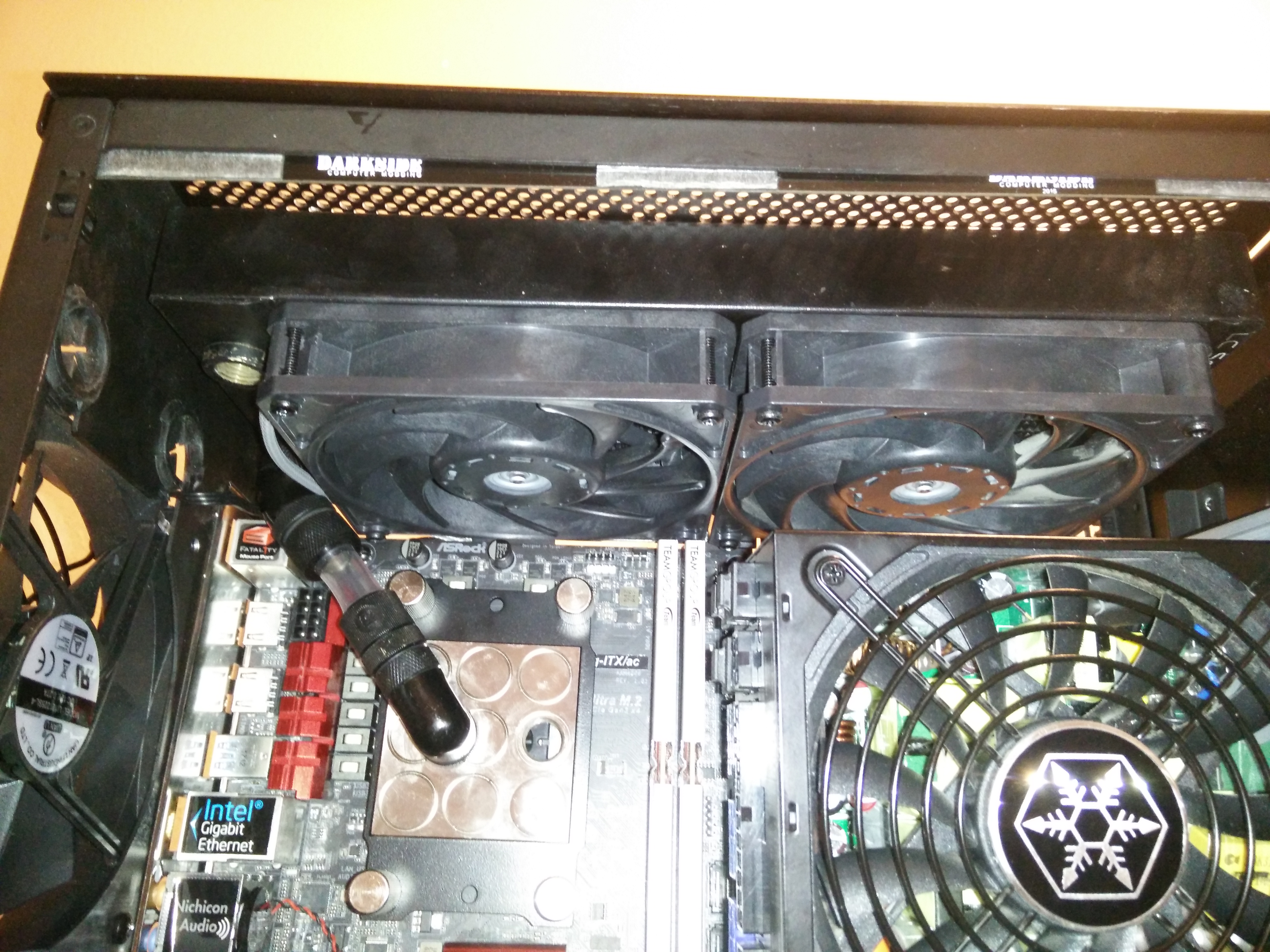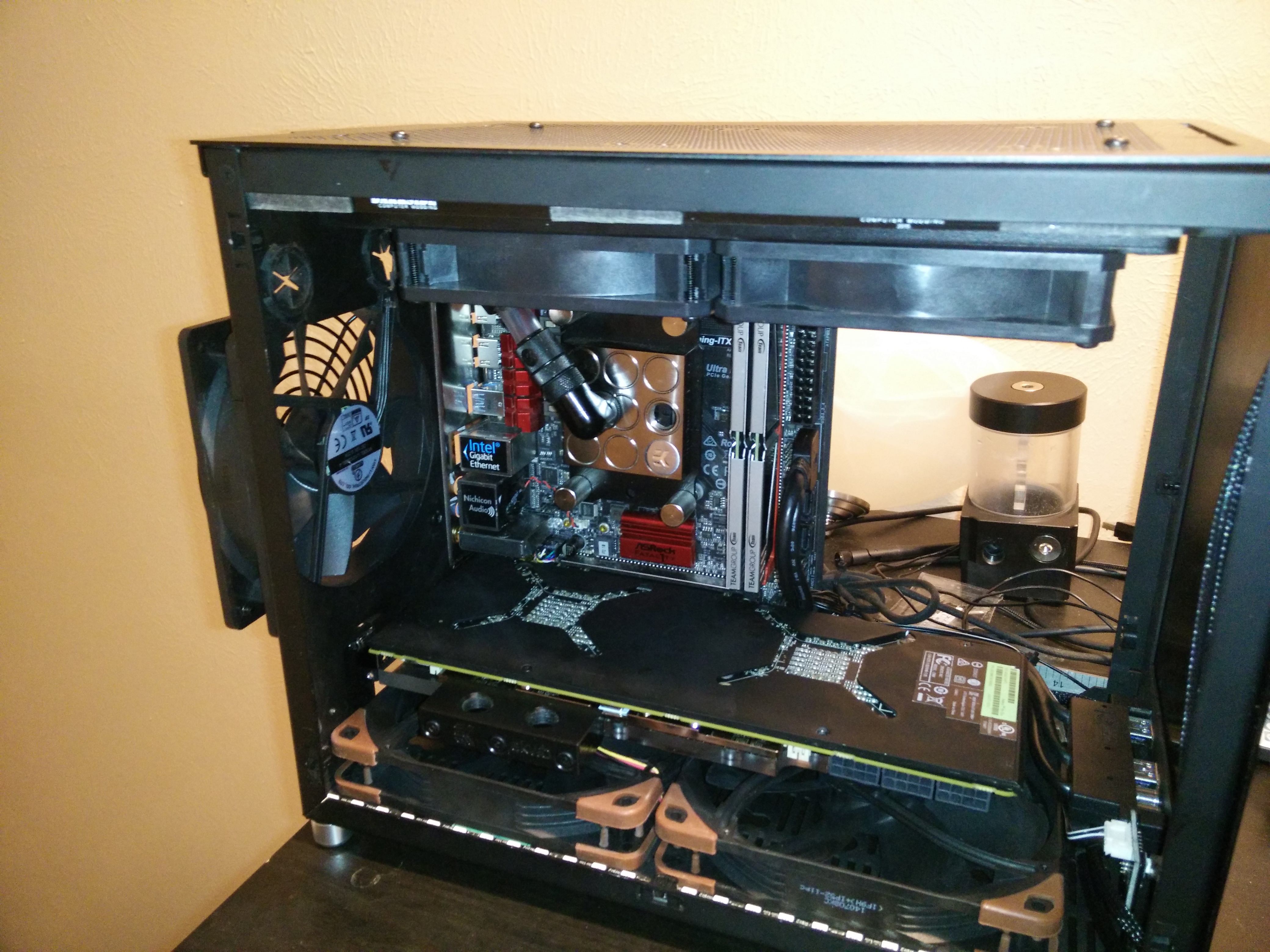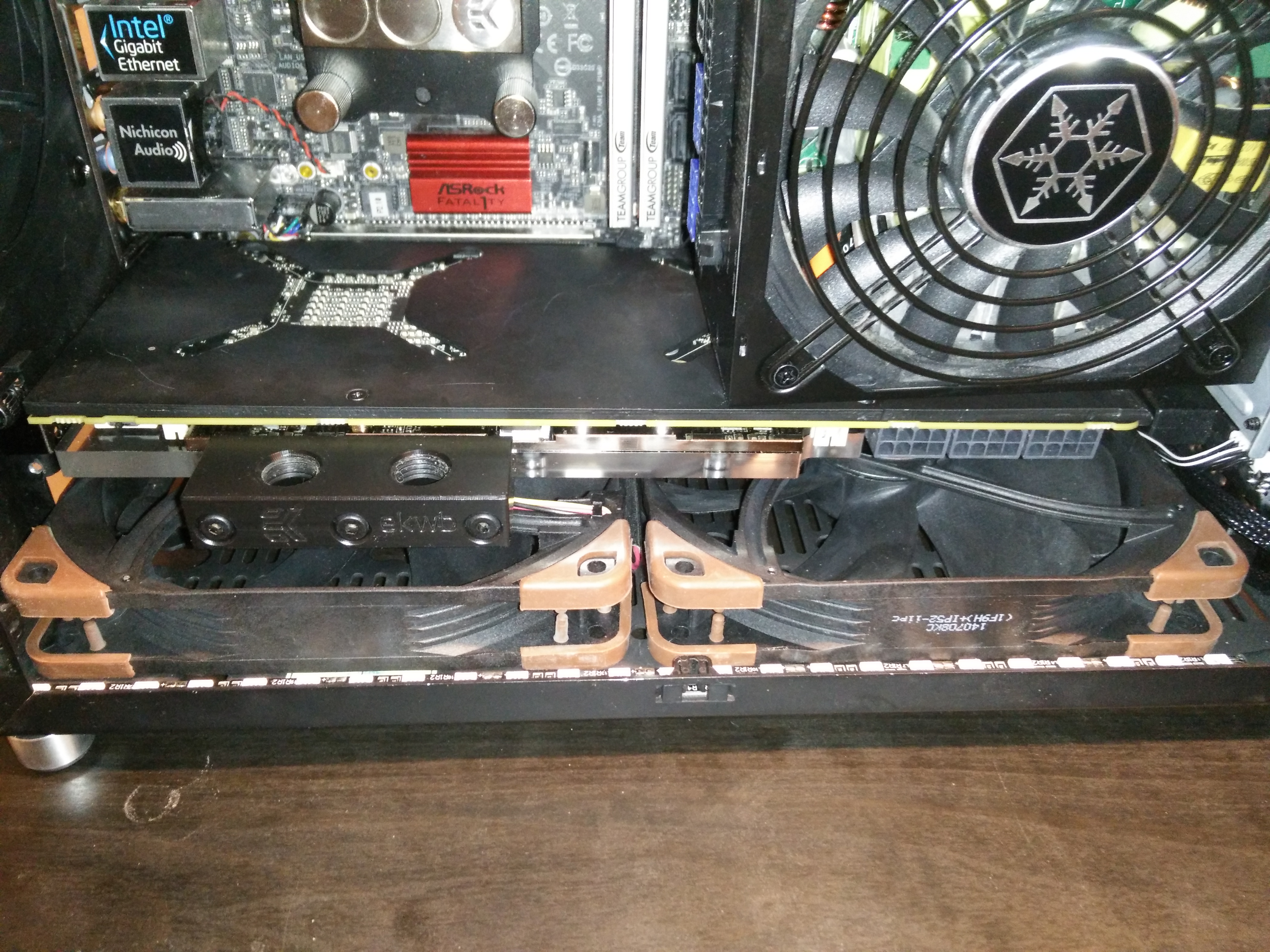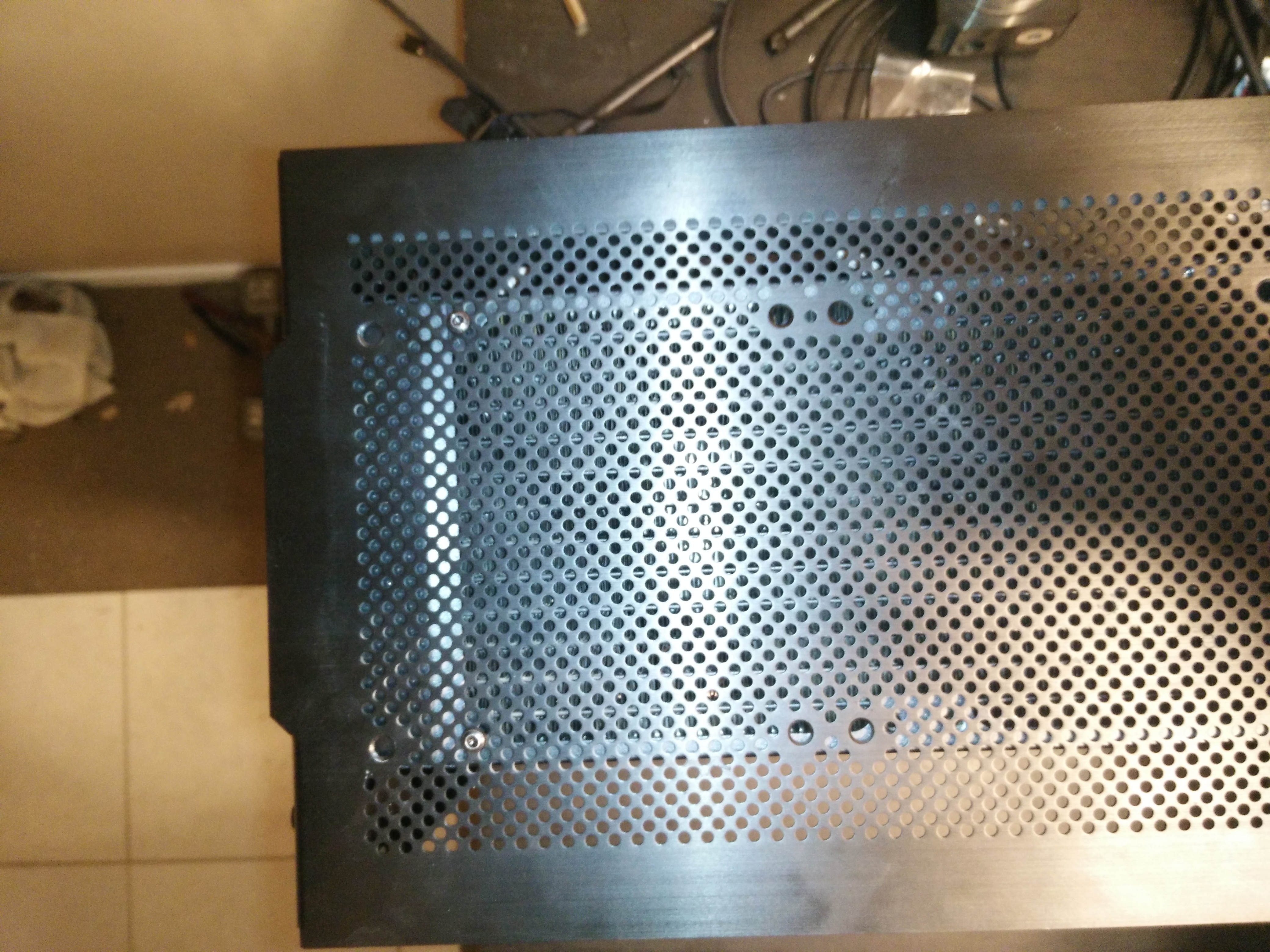The build:
PCPartPicker part list / Price breakdown by merchant
CPU: AMD RYZEN 7 1700 3.0GHz 8-Core Processor ($328.99 @ SuperBiiz)
Motherboard: -ASRock ITX Motherboard placeholder-
Memory: Team T-Force / Night Hawk 32GB (2 x 16GB) DDR4-3200 Memory ($134.99 @ Newegg)
Storage: Patriot Ignite M2 480GB M.2-2280 Solid State Drive ($179.00 @ B&H)
Video Card: XFX Radeon Pro Duo 8GB Video Card (Purchased For $650.00)
Case: Lian-Li PC-Q10WX Mini ITX Desktop Case (Purchased For $116.50)
Power Supply: Silverstone 600W 80+ Gold Certified Fully-Modular SFX Power Supply (Purchased For $80.00)
Operating System: Microsoft Windows 10 Pro OEM 64-bit (Purchased For $0.00)
So some notes about the hardware choices:
- ASRock ITX motherboard is what I’m waiting on to complete this build.
- I’ve read reviews of the RAM and none have shown me red flags. It’s like $14 more to get 32GB vs 16GB compared to all other RAM and I feel like I can take the heatspreader off to cover the LEDs if I don’t like the lighting.
- That M.2 SSD is chosen for price reasons. I don’t feel I’d notice the difference betwen 500MB/s and 2GB/s speeds. Even with VMs. I’d rather have NVMe, but obviously cost is a factor and the benefit isn’t really necessary. Though I would prefer it simply because “most power in smallest space”.
- I’ll be modding the case to fit the video card.
- The power supply only having two 6+2 PCI-e power cables means I will need to use a Molex -> 6+2 pin adapter. If I leave everything stock, PCPP states it will use about 450w considering TDPs. I intend to underclock the GPU and overclock the CPU and I feel they’ll balance out at around 500w. I have a watt-meter so I’ll be able to verify my PSU is fine.
The ideal with this is that it will be running some flavor of Linux (whatever I feel makes my life easiest but gives me things like Linux Containers and compatibility with hardware passthrough).
I’m almost 100% sure it won’t work, but I’m going to see about passing the GPU through to a Windows VM. In both Windows and Linux, these dual GPU cards are viewed as two separate GPUs. Though my understanding of IOMMU grouping means they’ll almost certainly be grouped by the PCI-e slot and so it’s both or neither and I won’t be able to do that. We’ll see.
I will decide on the distro later. I’d prefer something without SystemD (so maybe https://devuan.org, Debian without SystemD). I’m not versed enough to make something work with init that depends on SystemD so we’ll see.
I intend to add a decent handle to the top of the Case for carrying around like a suitcase or similar.
I’m going to be removing the PSU bracket and moving the PSU to a different position so I can have two 120mm AIO Radiators. One for the Pro Duo and one for the R7 1700 CPU.
We’ll see how much of this I can actually do, but end game is experimental VMs/containers for learning and gaming for days. I’m hopeful.
Feel free to give feedback. I may have overlooked something.
“Why call it tesseract?”
Because it’s a cool name. Thinking on it more, maybe some play off of Neutron Star (because small and dense and therefore powerful), but I can’t think of a better name atm. So for me, tesseract works. Suggestions are welcome.
#Edit 03/22/2017:
I have decided to go custom water cooling with this system. The parts I’ll be getting will include the following:
EK Supremacy EVO Plexi+Nickel CPU waterblock: https://www.ekwb.com/shop/ek-supremacy-evo-amd-nickel
EK FC Radeon Pro Duo Plexi+Nickel GPU waterblock (they made a water block for this? LOL): https://www.amazon.com/EK-FC-Radeon-Pro-Duo-Nickel/dp/B01F9N6K3S
EK XRES-100 Reservoir: https://www.ekwb.com/shop/ek-xres-100-ddc-acetal With DDC Pump.
At least one 240mm radiator possibly with a second 120mm radiator.
“But where will you put all this stuff?”
I have plans. I’ve taken apart the case a bit and checked, and I’ll be able to move the PSU to the front of the case (effectively) rather than hanging from the top. This will allow me to stick the 240mm to the roof as it has mounting points for that and clearance as well.
The 120mm I might be able to fit under the PSU on the front. There’s a lot of problems with that though. No ventilation on front panel; how to setup the runs of tube;
It’ll be with black fittings, clear tube, and clear coolant (basically distilled water + biocide copper liquid). I like simple and I like water. Water is a pretty cool thing. It will almost certainly have lighting.
This might hinder my ability to add a handle, but we’ll see. My goal is no external stuff like fans or radiators. That’s not elegant to me.
Total Rad+Fan thickness is 70mm or 2.75 inches. I have about 2.5 inches to work with, so I may not be able to fit both the radiator and fans up top inside the case. We’ll see what we can do to make that happen later.
Progress is being made.
After checking out EK’s slim radiators, I’ll probably just get a 240mm for those. Should be enough, I’d hope. I’ll see if I can fit a 120mm somewhere later.


